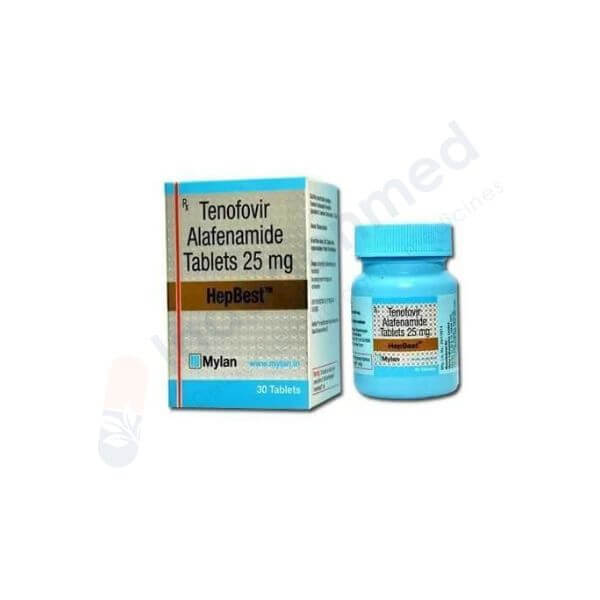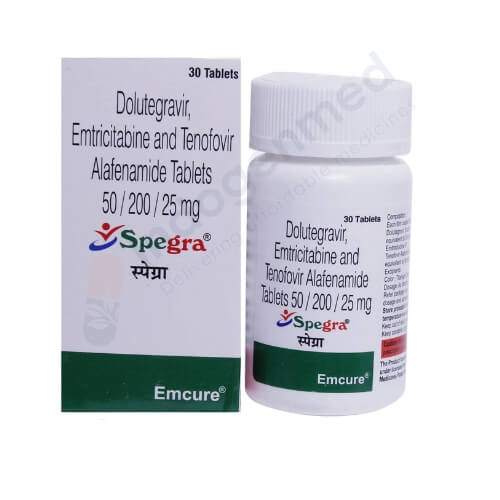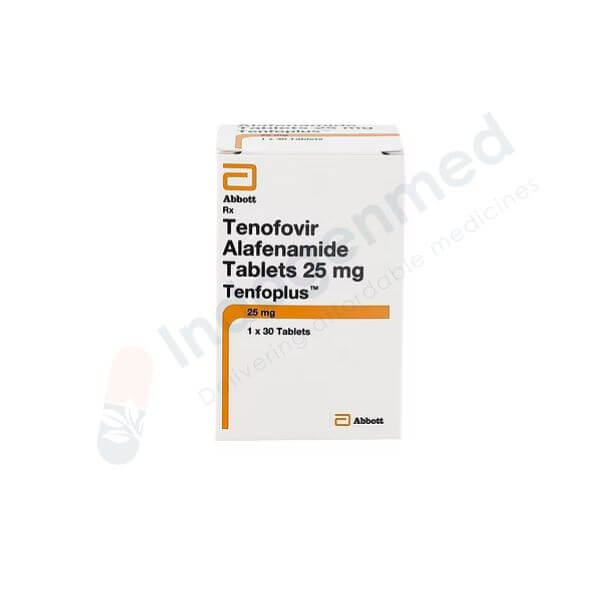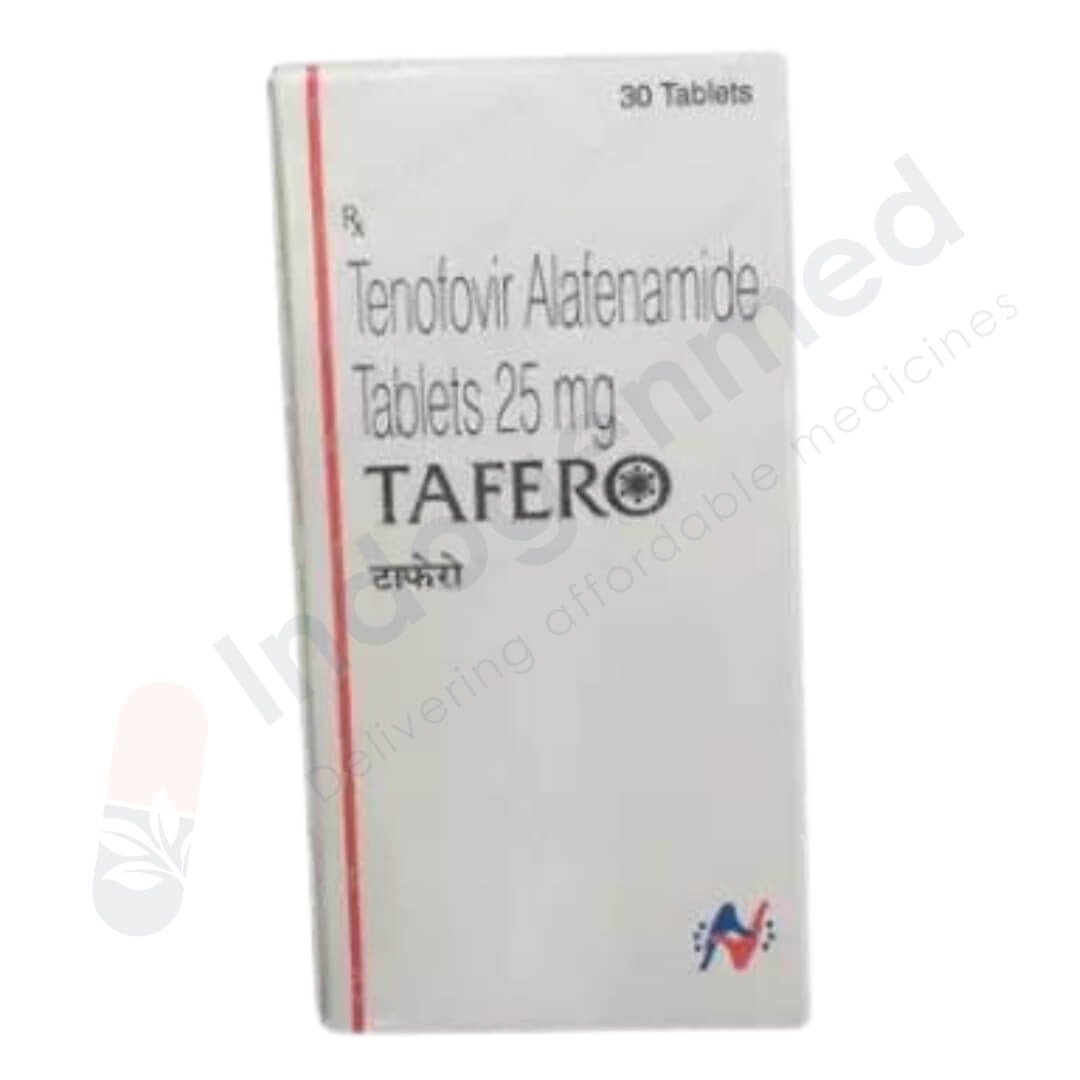AVAILABLE MEDICINE FOR Search By Molecule
| Image | Name | Price | Action |
|---|---|---|---|

|
Hepbest 25mg Tablets
$35.00 $45.00 |
$35.00 $45.00 |
|

|
Spegra Tablets
|
|
Ask for Price |

|
Tenfoplus 25mg Tablets
|
|
Ask for Price |

|
Nexataf 25mg Tablet
|
|
Ask for Price |

|
Tafero 25mg Tablets
|
|
Ask for Price |
Introduction to Tenofovir Alafenamide
Tenofovir Alafenamide (TAF) is a new medication for treating HIV-1. It is a pro drug of Tenofovir, meaning it converts into the active form inside the body. TAF works better and causes fewer side effects than the older drug, Tenofovir Disoproxil Fumarate (TDF).
Its chemical formula is C19H30N5O10P, and it includes an ester group that helps it work effectively in the body. Once inside the cells, TAF turns into Tenofovir, which fights the virus.
TAF is a key medication in HIV treatment because it is safer and more effective. It has less impact on kidney function and bone health compared to TDF, which has been a major concern with older drugs.
How it works ?
Tenofovir Alafenamide works by blocking an enzyme called reverse transcriptase, which HIV needs to make copies of itself in human cells. TAF is inactive on its own and must be changed into its active form Tenofovir, in the body. This change mainly occurs in lymphoid tissues, where HIV replicates.
Once activated, TAF competes with natural building blocks during the process of making viral DNA, causing the DNA strand to stop growing too soon. This action stops the reverse transcriptase enzyme, preventing HIV from turning its RNA into DNA.
By disrupting the creation and replication of viral DNA, TAF reduces the amount of virus in the blood, helping to control the infection and allowing the immune system to heal. Because of its effectiveness, TAF is an important part of long-term HIV-1 treatment.
Effectiveness
Tenofovir Alafenamide, effectively treats HIV-1 by lowering viral load and helping patients suppress the virus. It boosts the immune system by increasing CD4 cell counts. TAF needs a smaller dose than Tenofovir Disoproxil Fumarate (TDF) to achieve the same results, leading to fewer side effects on kidney function and bone density. Clinical trials show that TAF-based treatments lead to high viral suppression rates and fewer side effects than TDF, making TAF an important part of current HIV treatment.
FDA & EMA Approval
Tenofovir Alafenamide (TAF) is widely approved by major global health agencies for treating HIV-1. The U.S. Food and Drug Administration (FDA) approved TAF in November 2015 as part of combination therapies.
The European Medicines Agency (EMA) and other international bodies also approved it. These approvals show TAF's global acceptance, supported by clinical trials that proved it works better and is safer than Tenofovir Disoproxil Fumarate (TDF).
Dosage and Administration
Standard Dosage
Take 25 mg once a day as part of combination HIV treatment. It is often found in fixed-dose combination tablets.
Take your medication at the same time every day. Follow the dosing schedule to keep the right amount of the drug in your system.
Take the medicine at the same time every day. Stick to the dosing schedule to keep the right amount of the drug in your system.
You can take it with or without food. If it's part of a combination tablet, follow the specific instructions.
Missed Dose:
Take the missed dose as soon as you remember, unless it's nearly time for the next dose. If it's almost time for the next dose, skip the missed one.
Do not take two doses at once.
Side Effects
Common Side Effects:
Nausea
Diarrhea
Headache
Fatigue
Serious Side Effects:
Lactic acidosis
Liver toxicity
Kidney problems
Bone density loss
Current Research and Developments on Tenofovir Alafenamide
Ongoing Studies - Researchers are testing TAF in patients with hepatitis B and kidney problems. They are also studying its long-term effects on bone and kidney health, as well as new drug combinations to improve results.
Future Applications - TAF is being investigated for HIV prevention (PrEP) and treatment of other viral infections like hepatitis B. Researchers aim to create long-acting forms of TAF for easier dosing.
Innovative Therapies - New combinations of TAF and delivery methods, such as injectables, are being developed to reduce the number of pills patients need to take and improve adherence to treatment.
Reference
https://www.accessdata.fda.gov/drugsatfda_docs/nda/2001/21-356_Viread.cfm


